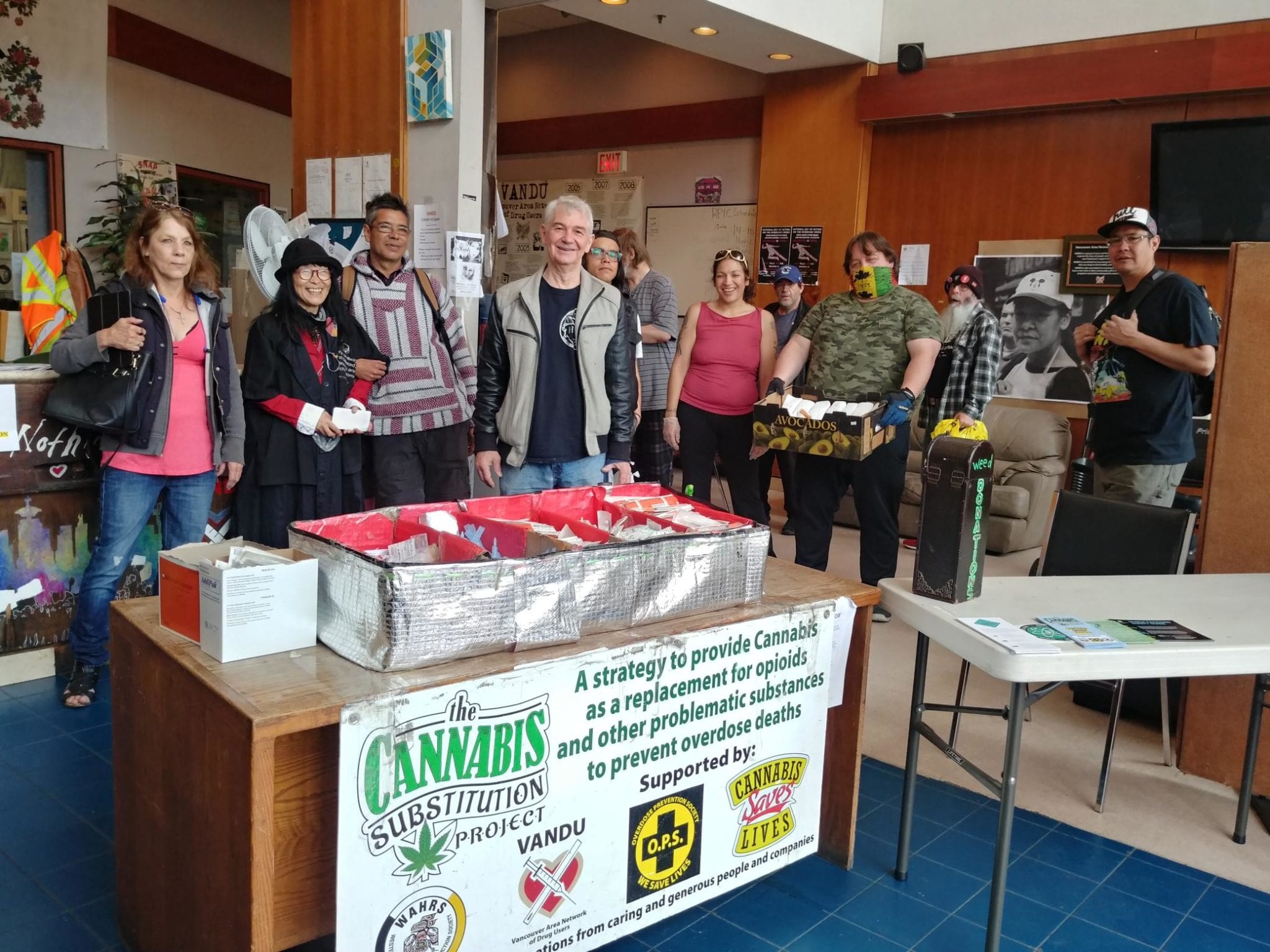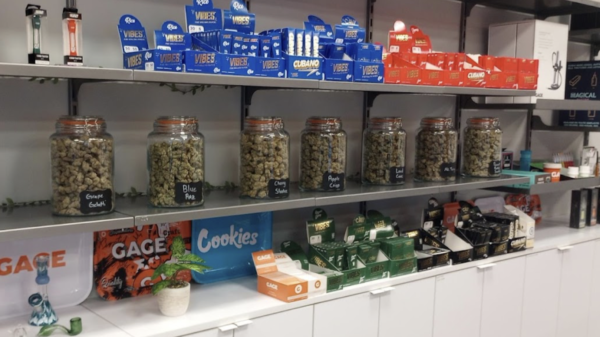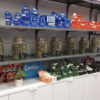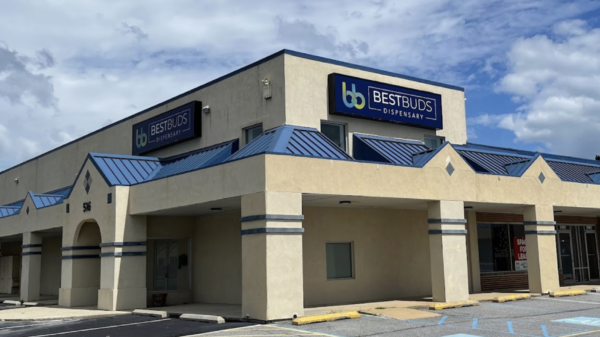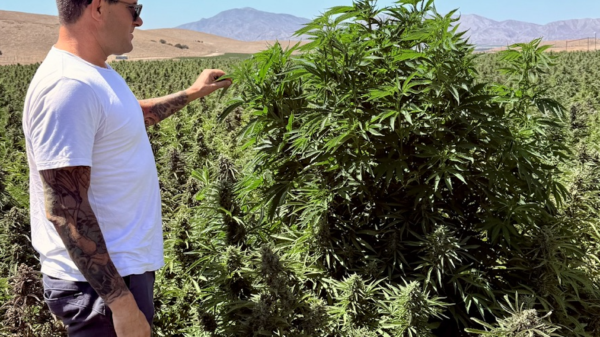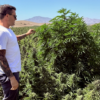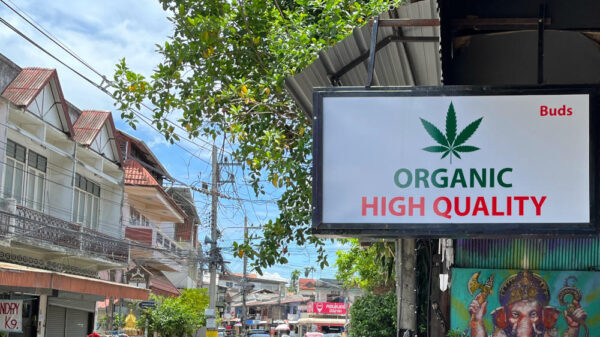The regulated cannabis industry is blocking marginalized people from buying weed, according to a new study.
While working as a post doctoral fellow in Vancouver’s Downtown Eastside from 2017 to 2019, cannabis researcher and harm reduction expert Jenna Valleriani didn’t meet a single person who accessed cannabis through the regulated market.
She was working at the British Columbia Centre on Substance Use and researching how people use cannabis, but changed her research to ask why people weren’t buying legal weed.
While interviewing 23 people who lived in the DTES and self reported using drugs, Valleriani heard that the price of regulated cannabis and lack of product selection were some of the top reasons people bought from their friends or an unregulated retailer.

Harm reduction scientist Jenna Valleriani wanted to know why no one she met on Vancouver’s Downtown Eastside was buying legal weed. Submitted photo
Valleriani’s findings were recently published in the International Journal of Drug Policy in a study she co-authored alongside seven other substance use and harm reduction scientists. In the study, Valleriani explored the different barriers her cohort reported as blocking them from accessing the regulated market.
Blocking marginalized people, especially people who use drugs, from accessing cannabis can have serious consequences.
A number of recent studies have shown how cannabis can be used as a harm reduction tool. Emerging science shows that people who use cannabis use less other drugs — which was supported by the lived experience of Valleriani’s interview subjects.
Read more: Cannabis is the overdose prevention tool we don’t use: symposium
Read more: Daily cannabis use could help battle overdose crisis: study
All but one interviewee said cannabis helped them reduce their use of other drugs, and 21 out of 23 reported they could use cannabis to manage their pain. Weed was also reported to help people sleep at night (57 per cent), help with appetite (26 per cent) and just to have fun (83 per cent).
But no one could buy legal cannabis.
“How can we have these conversations around cannabis as an interventional strategy, or as this fantastic harm reduction tool when the populations who need it most can’t access it?” Valleriani said.
The four main barriers that exclude marginalized communities
Here are the four main barriers:
The price of cannabis
Regulated stores sell pre-weighed, pre-packaged cannabis, which means prices are fixed. That means you can’t earn $4 and then go buy $4 worth of cannabis, Valleriani said.
When policy makers talk about the cost of cannabis they’re often viewing the price through a middle-class lens, she said. For people living in poverty, the price — as well as the excise and sales tax — isn’t just expensive, it’s unaccessible.
To be able to afford the regulated market, where the average gram sells for $9.83, people would need to turn to high-risk income like sex work or drug dealing, the study said.
Product selection
When managing substance use, Valleriani said high-THC flower, high-dose edibles and CBD products were talked about the most. But the problem is these products are usually the most expensive or don’t exist in the regulated market. Health Canada capped edibles at 10 milligrams of THC per package, which makes it effectively impossible for people who use a couple hundred — or a couple thousand — milligrams of THC to get them through the day, she noted.
Medical complications
Medical cannabis has been regulated in Canada for almost 20 years but the process of accessing it is prohibitive.
Doctors who don’t understand how cannabis can be used as a harm reduction tool are hesitant to prescribe it, Valleriani said. Actually a lot of clinics have policies against it, she added.
In Canada, medical cannabis is prescribed by a doctor and then the prescription is filled by a licensed producer, who ships the weed to you. But a lot of people living on the DTES don’t have a steady mailing address or photo ID needed to claim mail, Valleriani said.
Community access
Regulated retail stores are rarely connected to the communities they operate in, Valleriani said. And that can be isolating, especially for people who are dealing with chronic pain, illness or withdrawal symptoms and who use the place they access cannabis as a social support system, the study said.
“A lot of people are alone out there, you know, and people come in just to chitchat, because I’m maybe the only person they’re in contact with that day, that talks to them. You know, you see a lot of that here,” one woman said in the study. “It’s sad. There’s so many really cool people out there and just nobody takes the time to talk to them. They say they’re throwaways.”
Having a place where people can buy weed in their own neighbourhood is really important, Valleriani said. People living on the DTES won’t travel across the city to rich neighbourhoods like Kitsilano or South Granville to buy weed, she added.
Creating low-barrier access to cannabis
There are two grassroots harm reduction initiatives operating in the DTES that help people access low-barrier cannabis. The Cannabis Substitution Project hands out free care packages twice a week on a first-come, first-serve basis to around 250 people. The packages have an assortment of donated cannabis products averaging around a value of $50. The High Hopes Foundation gives out free cannabis to those who have signed up on a per-need basis, and serves around 100 people, the study said.

People line up on Vancouver’s Downtown Eastside to get a care package from the Cannabis Substitution Project. The organization serves around 250 people twice a week. Submitted photo
To change the system so marginalized communities can access the regulated market, municipalities should watch what organizations like the CSP and HHF are doing, Valleriani said. These organizations are rooted in the experiences of the people they work with everyday, and have created a harm reduction blueprint that could be used in other cities across Canada, she said.
Currently the CSP and HHF are reliant on donations, often from the unregulated market. But they’re working to move into the regulated market by pushing to open social enterprise retail stores on the DTES.
CSP founder Neil Magnuson told Mugglehead he’s not surprised by the study and is well aware of the barriers that block people from the regulated market.
In an April interview, Magnuson explained how he was working to expand the CSP by opening a low-barrier cannabis retail store on the DTES. The store would sell high-end potent products for, at most, $8 per gram and work to employ people from the community, to serve people in the community.

Contents of a Cannabis Substitution Project care package. Founder Neil Magnuson says its his full-time job to secure enough donations each week to put together the care packages. Submitted photo
Read more: DTES cannabis charity deemed essential during COVID-19 pandemic, not overdose crisis
“The people are in serious need and the government is who should be helping the people that are in serious need. It shouldn’t be just left up to our community to step up and do that,” Magnuson said in April.
Changing the regulatory system is going to require municipalities, the cannabis industry and community-based organizations to work together so that things like social enterprise retail stores can offer affordable, regulated cannabis, Valleriani said.
That’s a lot of teamwork, but it’s necessary, she said.
“Because first and foremost, if you have legal cannabis, but it’s not accessible to everyone, that’s not a functional program,” she said.
Valleriani currently works as Canopy Growth, Corp.‘s (TSX: WEED) director of global patient advocacy. The research and the study are unconnected to the cannabis company because it was done before she started her new role in January 2020, Valleriani said.
Top image: Volunteers at the Cannabis Substitution Project hand out care packages, containing around $50 of cannabis, in early May, 2020. Submitted photo
michelle@mugglehead.com
@missmishelle

